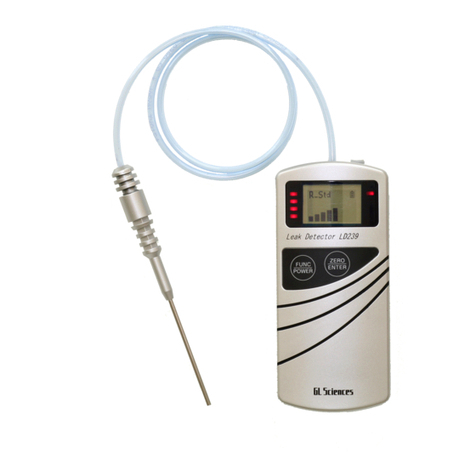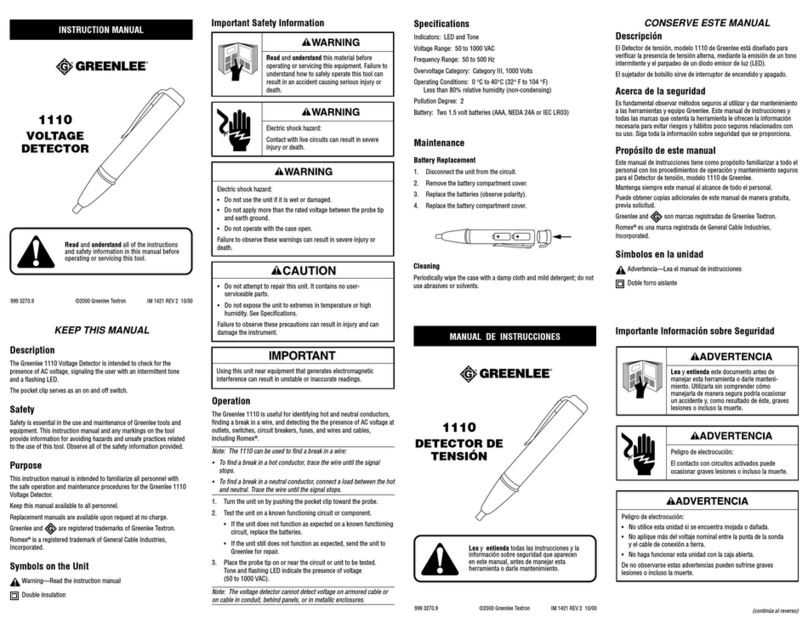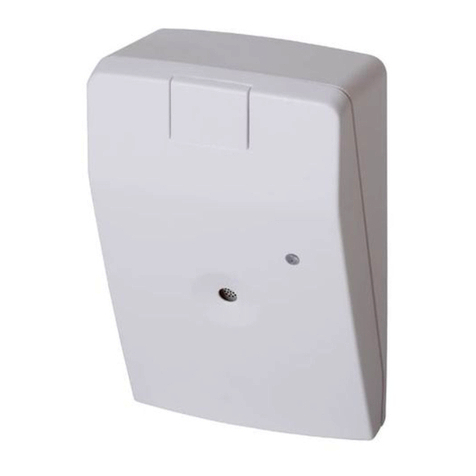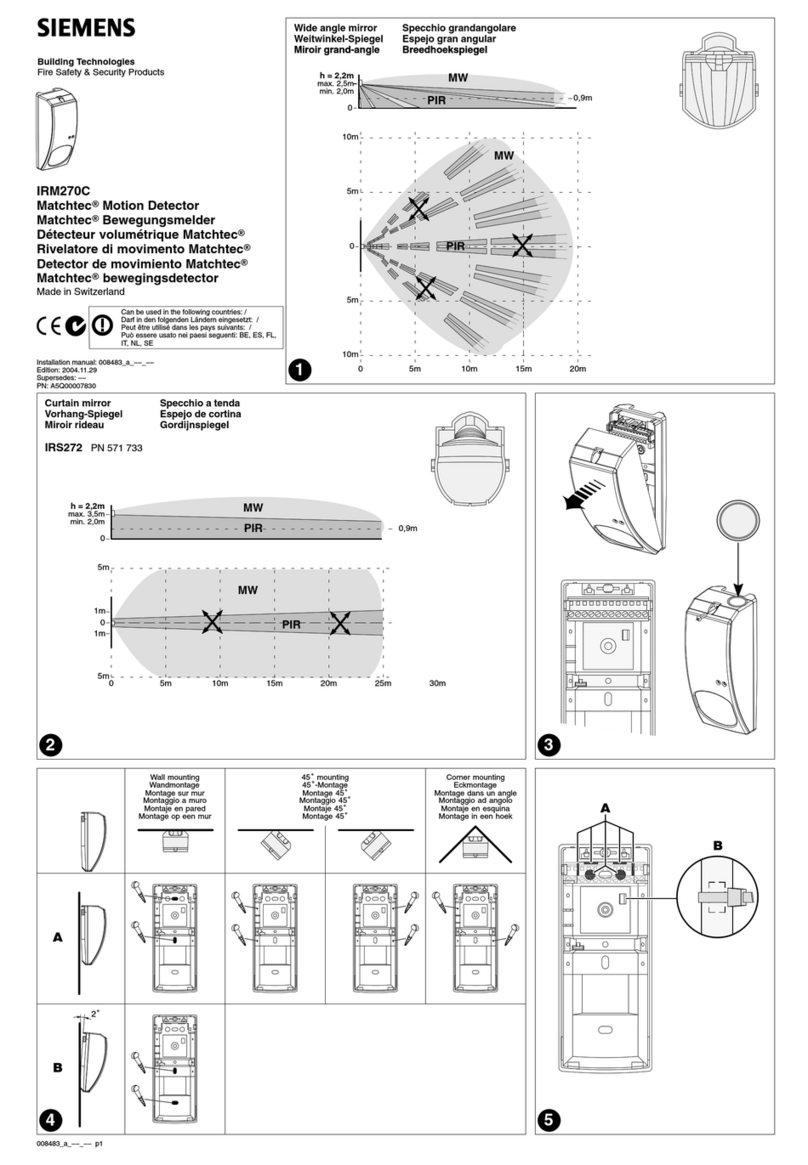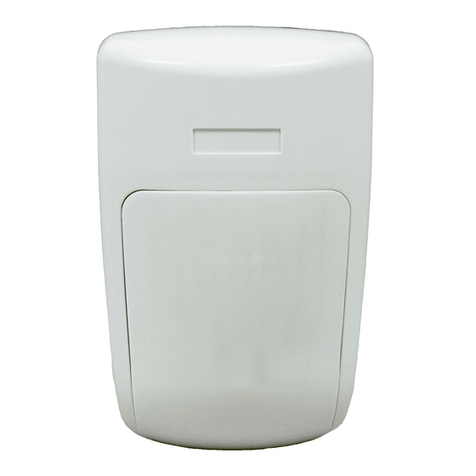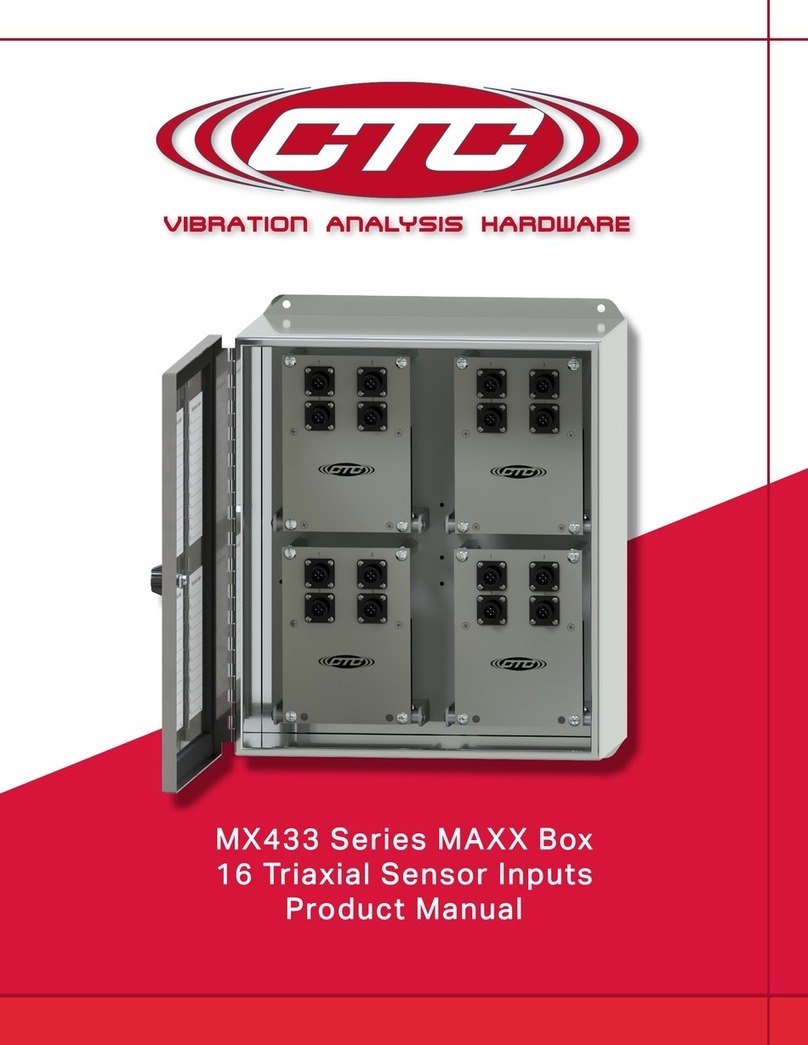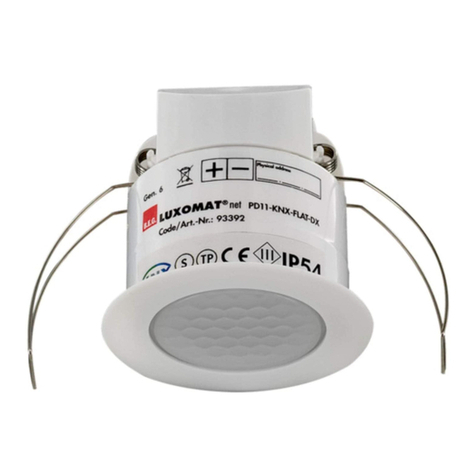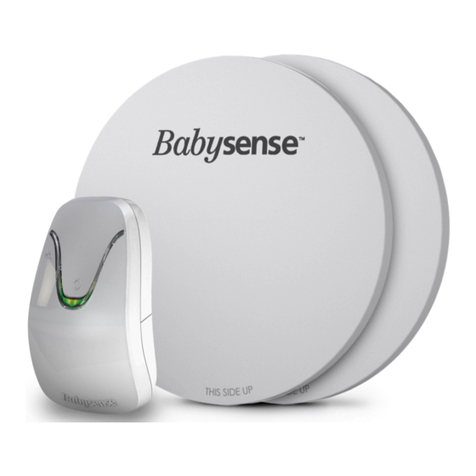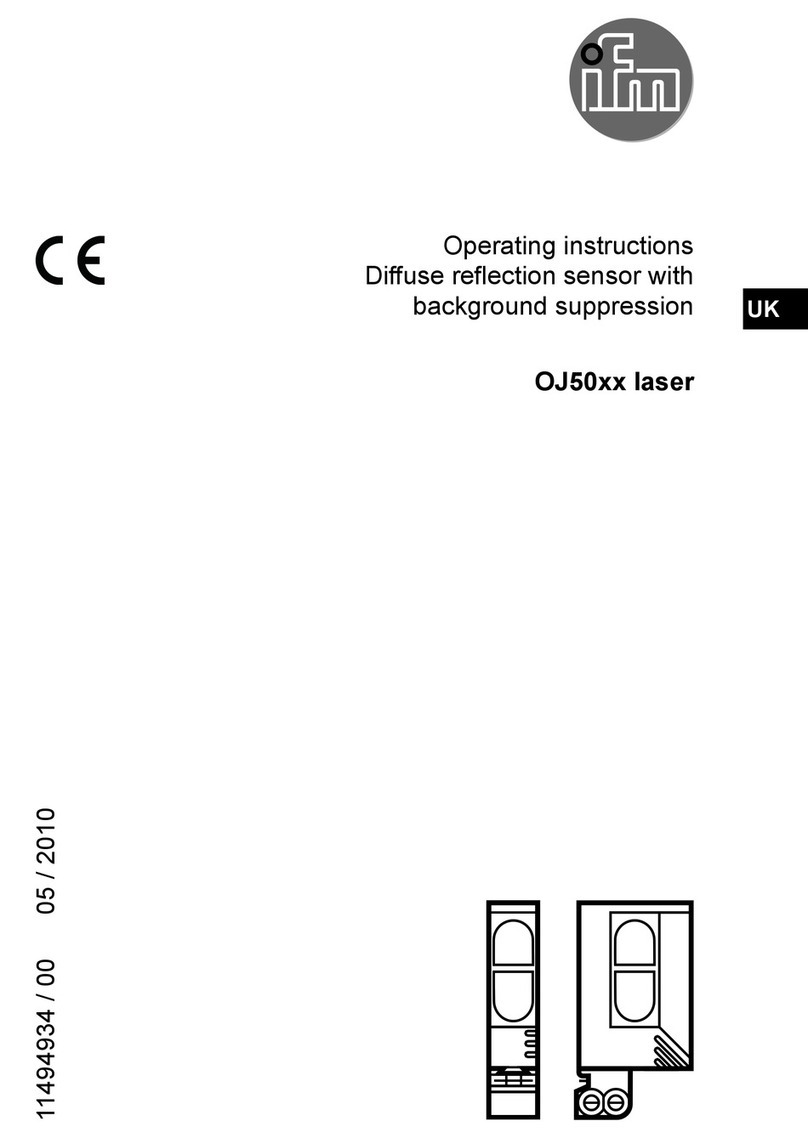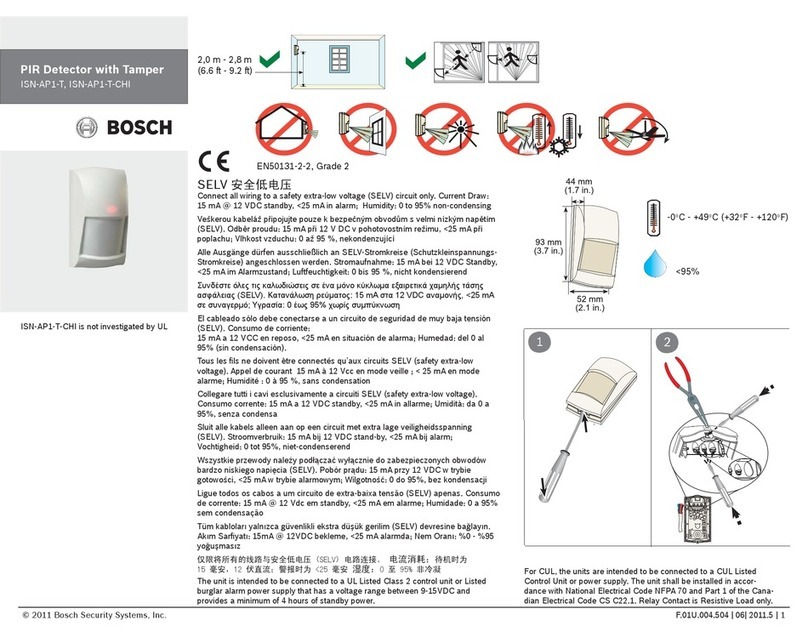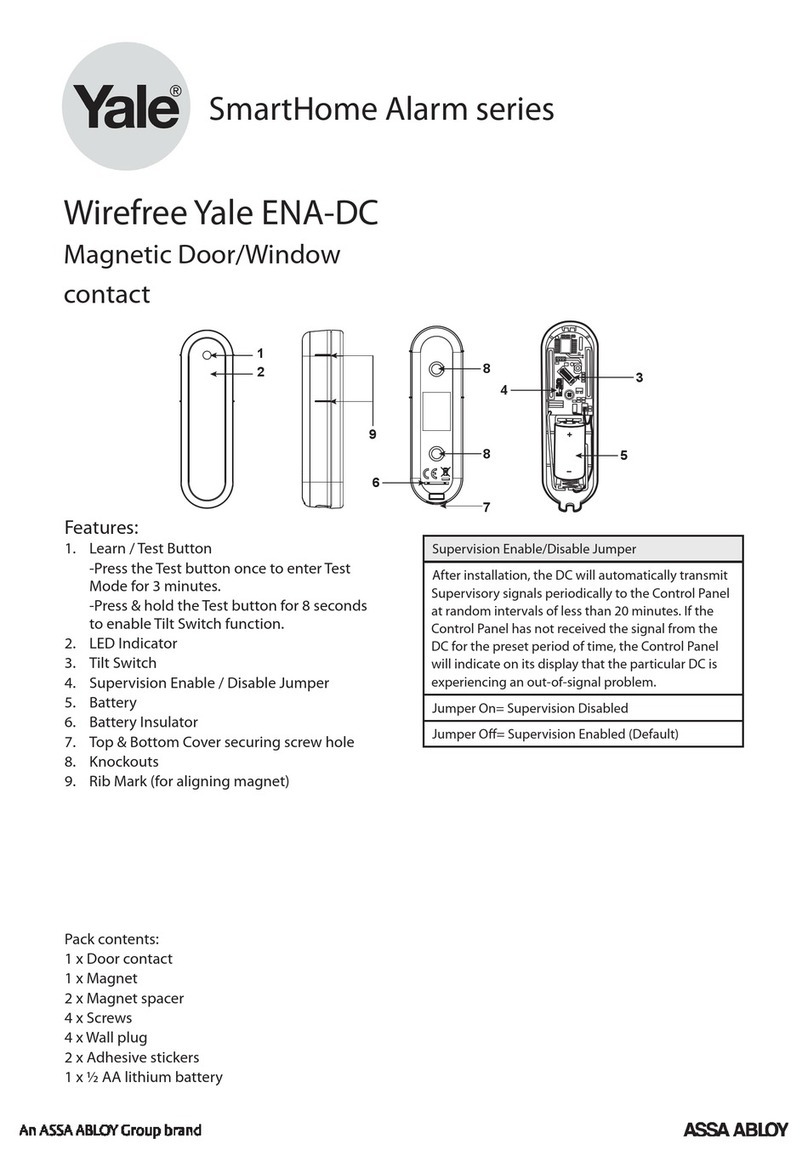GL Sciences LD239 User manual

Leak Detector LD239
User’s Guide

LD 239 Leak Detector User’s Guide
Issue 1
GL Sciences B.V.
Page 2
Disclaimer
GL Sciences B.V. makes no representations or warranties with respect to the contents or use of this
manual and specifically disclaims any express or implied warranties of merchantability or fitness for
any particular purpose. Further GL Sciences B.V. reserves the right to revise this manual and to make
changes to its content at any time, without obligation to notify any person or entity of such revisions
or changes. The instruments are similarly subject to change without notice.
Copyright
No part of this manual may be reproduced or transmitted in any form or by any means, electronic or
mechanical, including photocopying and recording, for any purpose other than the purchaser's
personal use without the written consent of the copyright holder.
GL Sciences B.V., 2012. All rights reserved.
GL Sciences B.V.
De Sleutel 9
5652 AS Eindhoven
The Netherlands
Telephone: +31 (0)40 254 95 31
E-mail: info@glsciences.eu
Web site: www.glsciences.eu
Revision History
Document Number: G800003
Date
Issue
Description
15-05-2012
1
Initial issue
01-05-2014
2
Company name change

LD 239 Leak Detector User’s Guide
Issue 1
GL Sciences B.V.
Page 3
Warranty Information
GL Sciences provides the following warranty for this instrument.
1. Period:
One year from the date of shipment or three months after repair.
2. Terms:
GL Sciences will provide free replacement parts for, or repair free of charge, any instrument that fails
during the warranty period. The warranty covers manufacturing defects only.
3. Exclusions:
GL Sciences does not guarantee that the operation of this product will be uninterrupted or error-
free. GL Sciences is not responsible for damage that occurs as a result of your failure to follow the
instructions intended for this instrument. The warranty does not apply to consumable parts incl.
Lithium-ion battery and does not extend to any product, which was damaged or lost as a result of:
1) accident, misuse, contamination, improper or inadequate maintenance or other external
causes;
2) loss or damage in transit;
3) modification or service by anyone other than GL Sciences or an GL Sciences authorized
representative;
4. Limitation of Liability:
The liability of GL Sciences (or its appointed representative) is limited to the cost of repair and/or
replacement of the product under warranty only. In no event will GL Sciences be liable for any
damages caused by the product or the failure of the product or perform, including any lost profits or
savings, business interruption, loss of use or any other commercial or economic loss of any kind, or
special, incremental, or consequential damages. GL Sciences is not liable for any claim made by a
third party or made for the third party. This limitation of liability applies whether damages are
sought, or a claim made, under this warranty or as a tort claim (including negligence and strict
product liability), a contract claim or any other claim. This limitation in liability cannot be waivered or
amended by any person.

LD 239 Leak Detector User’s Guide
Issue 1
GL Sciences B.V.
Page 4
CE Compliance
GL Sciences B.V. hereby declares under our sole responsibility that Leak Detector LD239 is in
conformity with 2004/78/EC European EMC Directive including EN31326-12006 and EN61326-
2-2:2006 standards.
Contents
Introduction..................................................................................................................................5
Warnings, Cautions and Notes .....................................................................................................5
2.1 General Warnings and Cautions................................................................................5
2.2 Operation Cautions and Notes ..................................................................................6
2.3 Battery Notes.............................................................................................................6
Part Names and Functions............................................................................................................7
Detector’s Display.........................................................................................................................7
Operating Procedure....................................................................................................................8
Setting Configuration Parameters..............................................................................................9
Replacement Service Parts........................................................................................................ 11
Technical Specification.............................................................................................................. 12

LD 239 Leak Detector User’s Guide
Issue 1
GL Sciences B.V.
Page 5
Introduction
LD239 electronic leak detector is highly sensitive instrument designed for use with the laboratory
equipment especially for detection of traces of helium or hydrogen gas leaks in GC environment.
In general, LD239 can detect leaks of any gas with thermal conductivity largely different from the
reference gas (air). The detector indicates leaks via an LCD display, LED lights and an audible
alarm.
The detector’s sensitivity strongly depends on the difference between the thermal conductivities
of gas and air (reference gas). The higher the difference, the higher the sensitivity. The gas type
and humidity should also influence the detector sensitivity. A table below lists thermal
conductivity of some common gases in W / m·K·10-3 at 0° C, 101.325 kPa.
Gas
Thermal
Conductivity
Gas
Thermal
Conductivity
Gas
Thermal
Conductivity
Hydrogen
168.2
Air*
24.1
Argon
16.3
Helium
142.2
Nitrogen*
24.0
Carbon
dioxide
14.5
Neon
46.5
Ethane
18.0
Krypton
8.7
Methane
30.2
Ethylene
16.4
Xenon
5.2
*Undetectable gases.
Warnings, Cautions and Notes
This section explains the warnings and cautions that should be observed when operating LD239.
Safety information is covered in this section and at relevant points throughout the manual. Please
read this manual in its entirety before operating the instrument.
Warnings, precautions and notes are indicated by the following conventions:
WARNING! Indicates a potentially hazardous situation, which, if not avoided,
could result in moderate to serious injury or possibly death.
CAUTION! Indicates a potentially hazardous situation, which, if not avoided,
could result in minor injury or equipment damage.
NOTE Emphasizes additional information that is provided to ensure
proper use of this instrument.
2.1 General Warnings and Cautions
WARNING!
LD239 is not an explosion-proof instrument. Do not use the detector in areas at
risk of fire, explosion or large flammable gas leaks!
Do not use the detector in areas that are contaminated with dust or combustible
fumes!

LD 239 Leak Detector User’s Guide
Issue 1
GL Sciences B.V.
Page 6
Do not use detector in areas without sufficient ventilation when detecting
trace amounts of flammable gases like Hydrogen!
CAUTION!
Do not open the detector’s body except replacing a battery.
Do not use the supplied with the detector USB cable for other equipment.
When charging battery, make sure that the detector is switched off.
2.2 Operation Cautions and Notes
Do not use the detector for corrosive gases leak detection.
LD239 may become warm during battery charging. This is normal and does not indicate a
malfunction.
LD239 is not a quantitative device. It is designed to indicate leaks in gas line connections
commonly associated with laboratory equipment.
Sensitivity of LD239 can be affected by wind. Take it into account when using LD239
outdoor.
Decrease in the detector sensitivity can be caused by filter clogging. Please replace filter
at the sample and/or reference lines if decrease in sensitivity is suspected.
Do not block tip of the sample probe and/or the reference port. Do not touch (press
against) any object with the sample probe while searching for leak.
The detector gives a positive response to water vapor in the air. Skin or wet surface vapor
can be detected as a gas leak.
Be aware that the detector’s sensitivity will be strongly affected if it is used in an area
containing large gas leak(s).
Do not expose the detector to shock, wet environments, solvents, or temperatures
outside its specified range.
Ensure the device is in a stable condition during operation.
2.3 Battery Notes
LD239 has a rechargeable lithium-ion battery. Before using the product for the first time,
or before using the product following an extended period of no use, recharge the battery.
If PC with a USB port is not available, use a commercial AC-DC adaptor with a USB output
connector.
When the LCD is blank or "Low Battery” error is indicated, the battery is low and must be
recharged. A LED light in the lower left side of the display indicates that battery is being
charged. When battery is fully charged, the LED goes off. It takes approx. 2.5 hours to
fully recharge the battery. When fully charged, LD239 provides approx. 5 hours of
continuous service assuming that the following settings are used: Standard Range, LED
OFF, Buzzer OFF.
When the battery is fully charged, disconnect the USB cable from the PC and the detector.
In case the detector remains connected to a PC for a long time, the detection may get
unstable because of heat generated during the battery charging.

LD 239 Leak Detector User’s Guide
Issue 1
GL Sciences B.V.
Page 7
A quick drop in the continuous service time with a fully-charged battery, indicates that the
battery needs to be replaced. Purchase a new battery for replacement (refer to chapter 7
“Replacement Service Parts”).
The lithium-ion battery used in LD239 does not comply with regulations in Russia and
Australia. Due to this restriction, the detector cannot be exported to these countries.
Part Names and Functions
1. FUNC/POWER
Key
: Turns power ON/OFF and selects functions.
2. ZERO/ENTER
Key
: Adjusts zero balance and enters settings.
3.
LCD
Display
4.
LED indicators: Indicates leak and battery charge level.
5. Reference Gas Inlet
6. USB Port: Used to charge detector’s battery via USB cable
.
7.
Battery
Cover
8. Strap
Eyelet
9.
Sample Probe (with internal
filter)
Detector’s Display
Fig. 4.1 Detector’s Display, Standard Range
1
2
3
4
5
6
7
9
1*
8
1
R_Std
3
2
4

LD 239 Leak Detector User’s Guide
Issue 1
GL Sciences B.V.
Page 8
1.
R_Std
or R_Hi indicates Standard or High Sensitivity Range correspondingly
.
2. Battery indicator shows the battery state in 3 levels.
Battery level 3: Full charge (more than 50%).
Battery level 2: Low charge (20 - 30%).
Battery level 1: Very low charge. Battery charging is required (remaining battery working
time is about 10 min).
3. LCD leak indicator. When gas leak is detected, bar graph is displayed. The number of
displayed bars in the graph indicates level of gas leak.
Zero Point (no leak):
1st bar on the left end is blinking.
Gas Leak: ■- black bars indicate the gas leak for a gas, which has higher thermal
conductivity than air (He, H, etc.).
□
- blank bars indicate the gas leak for a gas, which has lower thermal conductivity than
air(Ar, CO2, etc.).
4. LED leak indicator. When a gas leak is detected, total number of LED lights lit to the left
and right of the LCD display (max. 8 LED’s) indicates the size of the leak. LED leak indicator
can be used in addition to the LCD display indicator. The LED indicator can be enabled or
disabled via the configuration settings (refer to chapter 6 “Setting Configuration
Parameters”).
Zero Point (no leak): green or red LED blinks when the detector becomes stable at around
zero point.
Gas Leak: Red LED lights indicate the gas leak for a gas, which has higher thermal
conductivity than air (He, H, etc.). Green LED lights indicate the gas leak for a gas, which
has lower thermal conductivity than air (Ar, CO2, etc.).
Operating Procedure
1. Press FUNC/POWER key for about 1 sec to turn power on. LCD will show warming-up display
(Fig. 5.1). Warming-up takes approx. 25 sec at standard (Std) and approx. 90 sec at high (Hi)
sensitivity range setting.
2.
Fig. 5.1 Warming Up Display, Standard Range
After warming up, a standard display is shown (Fig. 4.1).
3. Check the detector stability at zero point. First bar on the left will be blinking black or blank
alternately when the detector is in stable condition. Periodically, the detector needs to be
R_Std
Warm Up
25
Skip:ENT
25 seconds countdown
Press ZERO/ENTER key to
skip

LD 239 Leak Detector User’s Guide
Issue 1
GL Sciences B.V.
Page 9
zeroed between uses. Press ZERO/ENTER key to adjust the zero balance (Fig. 5.3).
Out of zero point ZERO
adjust
R_Std R_Std R_Std
or ZERO
ENTER
Fig. 5.3 Zero Point Adjustment Procedure
4. Place the sample probe tip near the suspected gas connection to check it for leak. If there is
a leak, the LCD bar display will indicate it and the audible alarm will sound if the buzzer
function is enabled (refer to chapter 6 “Setting Configuration Parameters”). Move the probe
away from the leak and let the instrument return to zero point. Place the probe slowly back
to the leak to confirm its location.
Switch off LD239 when it is not in use. The unit’s power can be turned off either manually or
automatically depending on the configuration settings (refer to chapter 6 “Setting
Configuration Parameters”).
Setting Configuration Parameters
The LD239 configuration parameters are listed in a table below.
Parameter
Description
Sensitivity Range
Std - Standard Sensitivity Range
Hi - High Sensitivity Range
Buzzer
ON –buzzer sounds if leak is detected (more than 3 LCD)
OFF
LED’s display
ON
OFF
Backlight
ON
OFF
Auto-Power
ON
OFF
Fig. 5.1 shows the flow diagram for setting the configuration parameters.

LD 239 Leak Detector User’s Guide
Issue 1
GL Sciences B.V.
Page 10
Blinking (selecting)
condition
Display STD range Display Hi range
Fig. 5.1 Flow Diagram Setting Configuration Parameters

LD 239 Leak Detector User’s Guide
Issue 1
GL Sciences B.V.
Page 11
Replacement Service Parts
7.1 Battery Replacement
To replace the battery (Fig. 7.1 ):
1. Unscrew a screw using a small cross head Philips screw driver, size 0. Note that the screw is
very small and can be easily lost.
2. Remove the battery cover.
3. Remove the battery by pushing it in the arrow direction.
4. Install a new battery (p/no 2702-19341) and place the battery cover back.
Fig. 7.1 Battery Replacement
7.2 Replacement of Sample Probe Filter
To replace the sample probe filter (Fig. 7.2):
1. Unscrew the probe cap counterclockwise and remove the probe from the probe cap. The
sample filter is attached to the probe cap.
2. Remove the old sample filter from the probe cap. If the sample filter is stuck to the probe
cap, use long-nose pliers to remove it.
3. Insert the end of the PTFE tubing into a new sample filter (p/no 2702-19333) and attach it
tightly to the protective tubing.
4. Screw the probe onto the probe cap tightly.
Fig. 7.2 Sample Probe Filter Replacement
1
2
3
4
Holding pins
Terminals
Probe
Probe Cap
Protective Tubing
Sample Filter
1
2
3
Sample Filter
PTFE Tubing

LD 239 Leak Detector User’s Guide
Issue 1
GL Sciences B.V.
Page 12
7.3 Replacement of Reference Port Filter
To replace the reference port filter (Fig. 7.3), unscrew the old reference port filter out, and
replace a new one instead (p/no 2702-19334).
Reference
Filter
Fig. 7.3 Reference Port Filter Replacement
Technical Specification
Detection method: Thermal conductivity
Target gases: Helium, Hydrogen, CO2, Argon, Neon and other non-corrosive gases.
Sensitivity: Standard range - minimum 0.005 ml/min (He)
High range - minimum 0.0005 ml/min (He)
Settings: Sensitivity Range: (Standard/High), Buzzer: ON/OFF, LED Display: ON/OFF
LCD Backlight: ON/OFF, Auto power shutdown: ON/OFF
Temperature range: 10 - 40°C (non-condensing)
Battery: Rechargeable Lithium ion battery (up to five hours continuous use). Battery is
rechargeable through USB port (2.5 hours for a full recharge).
Dimension: 50(W) x 19.5(D) x 111(H) mm
Weight: Approx. 95 g
Accessories: USB cable, instruction manual, AC-DC adaptor with EURO or UK plug
(optional).
Other manuals for LD239
1
Table of contents
Other GL Sciences Security Sensor manuals
Popular Security Sensor manuals by other brands
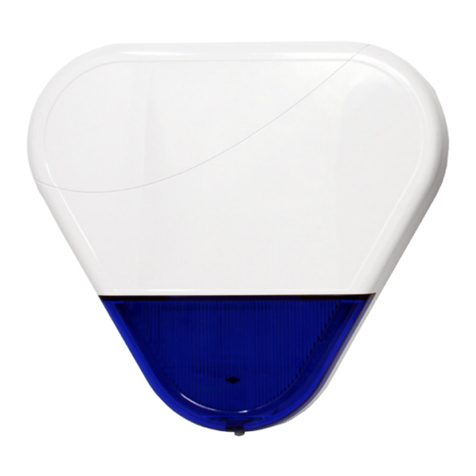
Alula
Alula RE636 Wireless Outdoor Siren Strobe Connect+... quick start guide
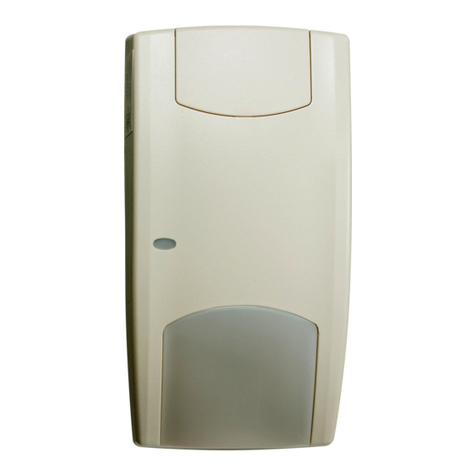
Interlogix
Interlogix VE1120 Series Installation sheet
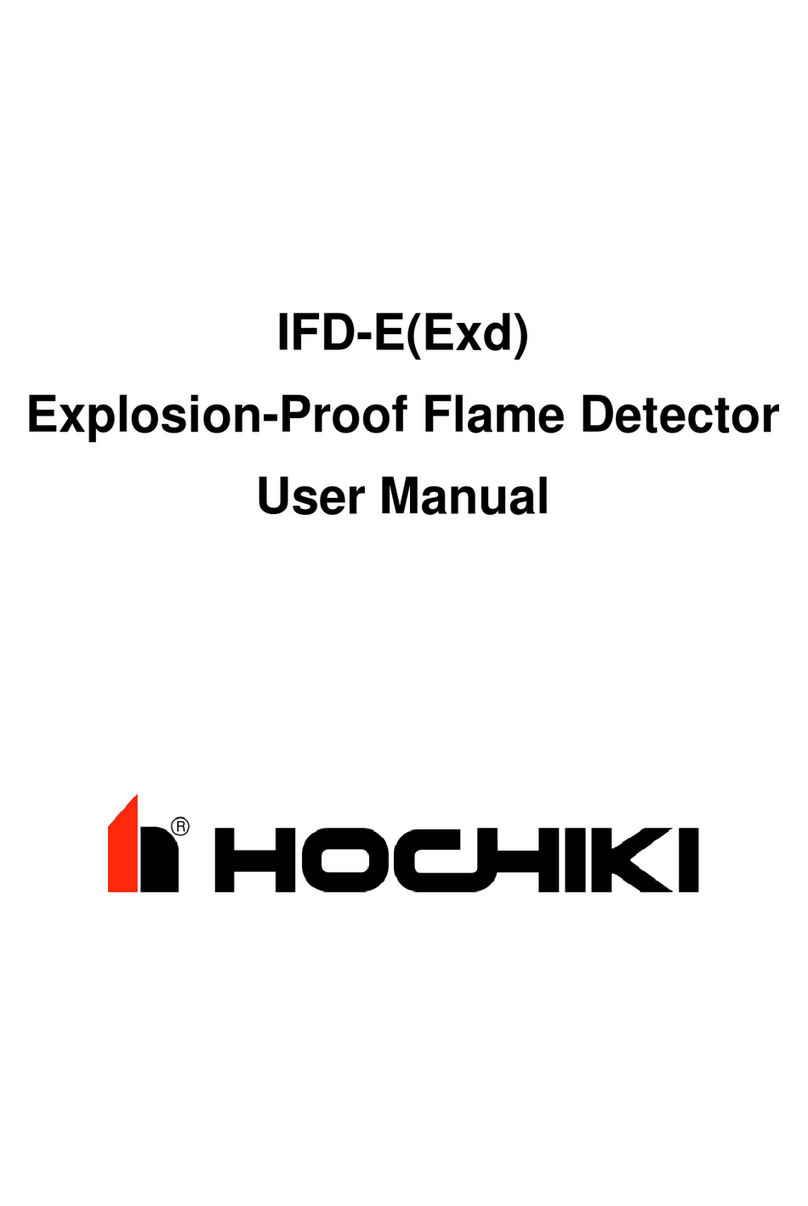
Hochiki
Hochiki IFD-E(Exd) user manual
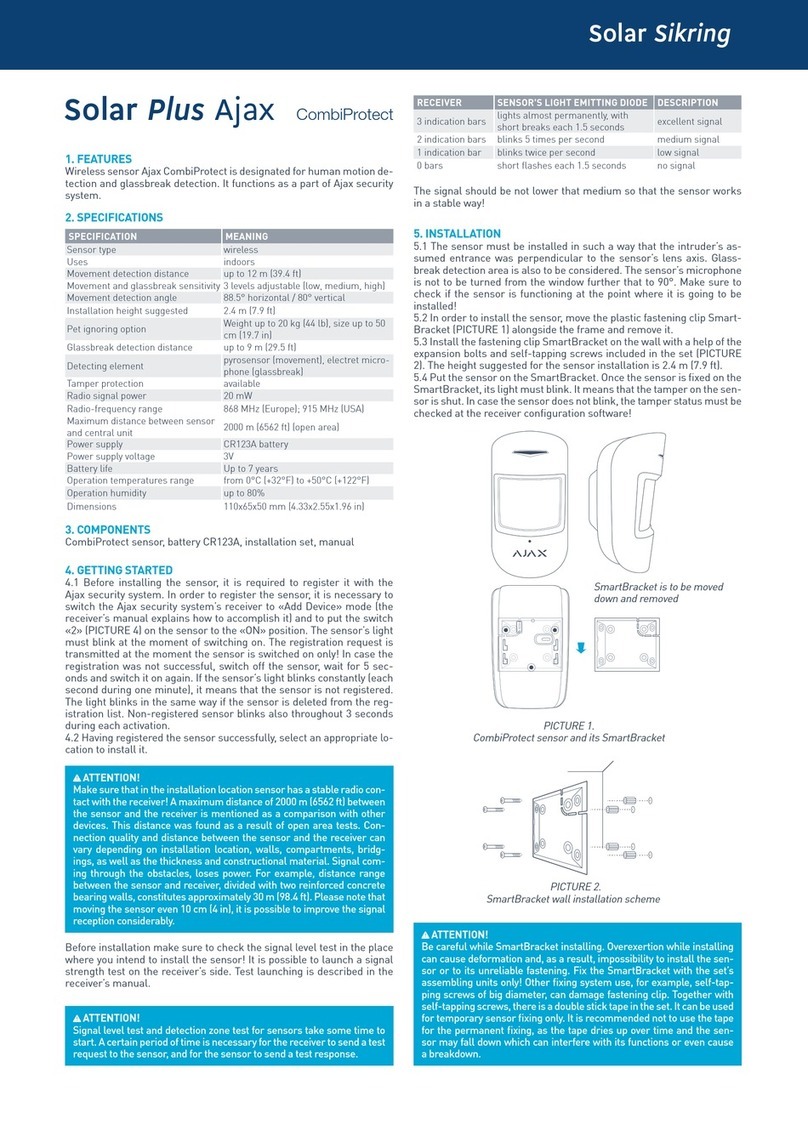
Solar
Solar Plus Ajax CombiProtect quick start guide

Doka
Doka Staxo 40 Instructions for assembly and use
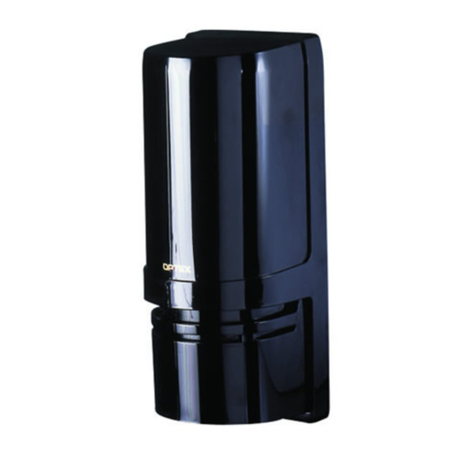
Optex
Optex AX-330PLUS installation instructions
